“Check out the giant bumblebees,” Caryl said as she walked slowly through the riotous display of wildflowers. She had come with me on this trip to check water on the range, and as is typical, she was wandering around looking at plants. The wildflowers are amazing this year, with hills painted in reds (from Indian paint brush), pale yellow (from milkvetch), and blues (from penstemon, or beardtongue). We occasionally gasp at the display, as we drive along the bumpy dirt road, pointing out exceptional hillsides of color.
The density of bumblebees was a little unnerving. On any one milkvetch, there were often 3. They are big bugs, and when they buzz you like a strafing World War Spitfire, you can actually feel a little blast of prop chop on your cheek.
But they were busy, and quite harmless. We were just obstructions that they winged around on the way to their sweet passion. We became brave, and crept within inches away trying to capture their visage on our phones (see the picture below).
The beeves are enjoying the color as well. I’m not sure they go breathless, as their fondness is based on flavor–palate; they like them for dinner. They relish the tiny star flowered Arennaria, a fine threaded petite beauty that most humans would, unseeing and careless, crush underfoot.
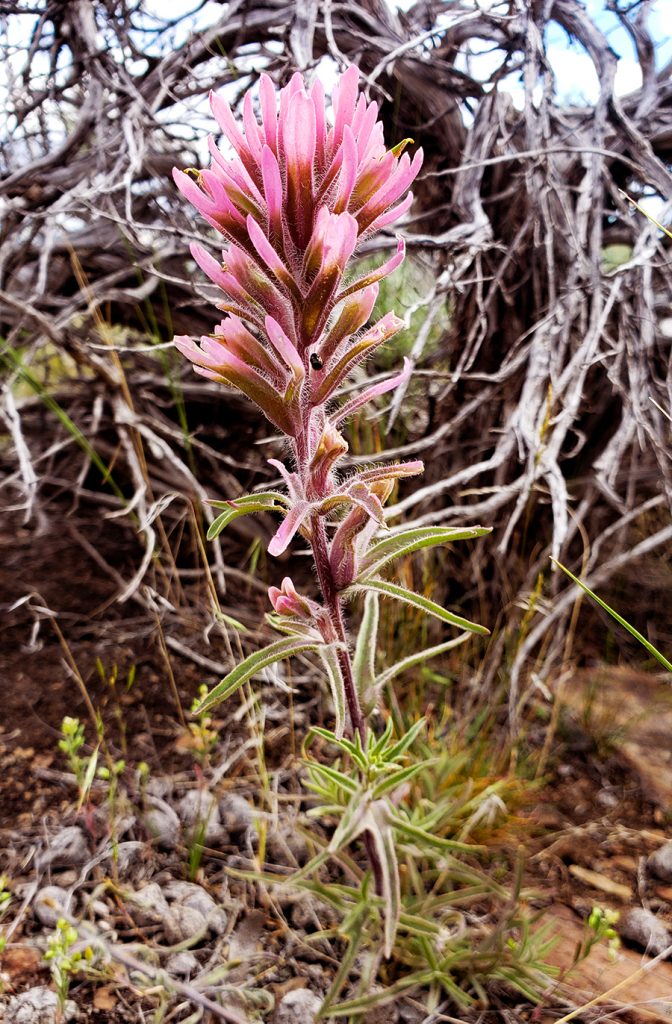
They graze Indian paintbrush pulsing in vibrant colors from salmon to scarlet that make entire hillsides glow red. And they’ll sample the showy mountain aster. The bitterroot milkvetch. The mountain buckwheat (not a grass at all, but a showy flower). There are hundreds of these forbs; we call our beef grass fed, but at this time of year, it is also wildflower fed.
I can see why they like them so; the Arennaria tastes like honey. The milkvetch, a sweet pea. Buckwheat, like a yeasty bread. When I see them imbibe the feast of flower, I know it is flavor they seek, and it is flavor they make on the rich flesh of their bones.
There are many others that seek the sweet, the flavor of the wild ranges.
Because the Hat Creek Ranges are one of the largest contiguous organic acreages in the world (1% of all organic land in the US), pollinators are abundant on the blossoms. Yesterday for lunch I grabbed a quick bite of jerky and sheep cheese, followed by some dried figs (typical lunchtime fare on the range) while on a solo recon mission to find the next grass rich with species diversity. I reclined in the shade of a dense stand of chokecherries at a high desert oasis we call Cherry Springs. Others had been here before me; an elk had left their telltale tracks and hair on the very place I dined. A coyote had left his mark on the ground just beyond my feet.
Cherry Springs is at 6500 feet elevation, and the short wild chokecherry trees had just started blooming. As I popped the last fig in my mouth, I put hat over eyes for a quick siesta. And I couldn’t help but hear them. Their unceasing droning buzz would put me to sleep.
They were bees. By the thousands. Not honeybees, but native bees, small black and white bees and next to them, massive B-52 bomber furry bumblebees. Moths and butterflies in droves dipped in the water of the springs.

I am awestruck at the sheer volume of life in this, a high desert in springtime. Just several months ago, all of it was in quiet repose under a polished sheen of snow and ice; silence reigned.
But now, there is a constant cacophony; bees and bumbles go busy in the 70 degree day; their volume rises and falls as cloud shadows scud across the hills, so cold-blooded their tiny bodies are. And the eaters of them flit across the tops of the sage; canyon wrens and mountain bluebirds work the unsuspecting bounty. Voles, mice and lizards pick up the vegetative detritus left by all. An occasional silent rattlesnake stalks in sagebrush shade, awaiting opportunity.
And we get to witness it all, and live among it. But time is running out on the ephemeral spring. Because these low country ranges will be put behind us as summer heat transforms them, and the color bleeds from the hillsides to be replaced with auburns, umbers, golds, and browns. Only the sage will hold its color, its evergreen leaves and deep roots find deep soil moisture.
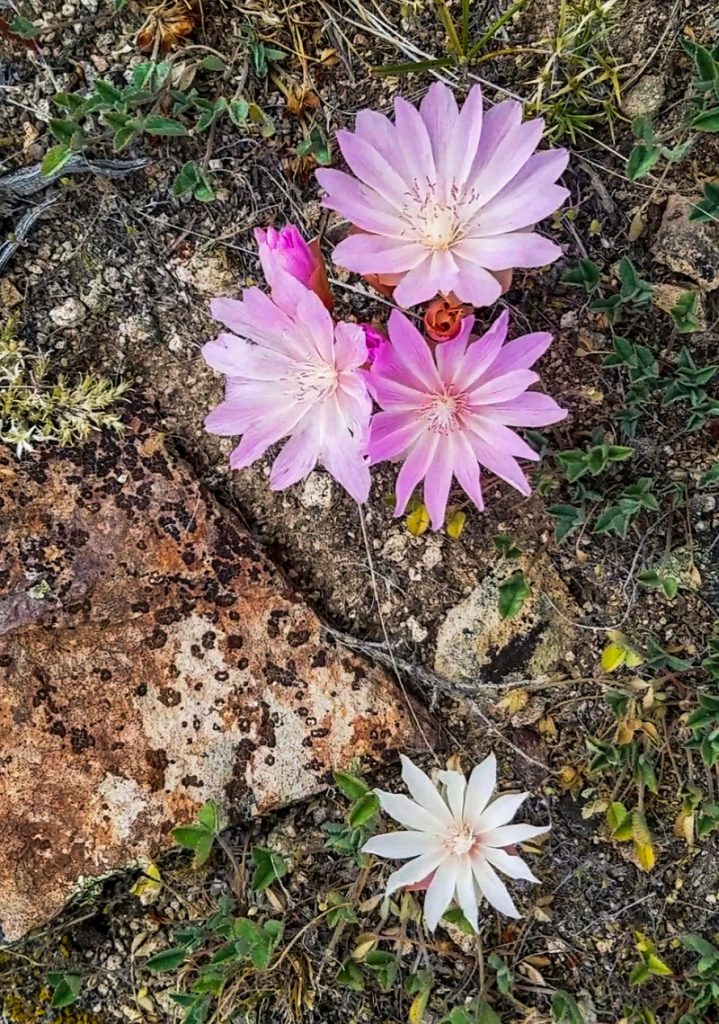
We’ve already gained over a thousand feet from the beginning of this year’s tour; and we will gain three thousand more, as we follow summer and melting snow. A few of the bees will go with us, following the floral display as it unfurls with elevation. But many will dig deep into the soil, hibernating from heat, and then snow. They have a short life above ground, but when the flowers come, they live in a brief glory.
Of the world’s 20,000 species of bees, Idaho has 400. It’s a lot, considering that Idaho isn’t rainforest. Instead, the elevational gradients that define the state create diverse habitats that range from blistering hot desert canyons to icy perpetually snow summits. Most of these are ground dwelling bees. They don’t form hives like the non-native honeybees do. These non-aggressive bees are solitary, with a single female tending her eggs.
And judging by the business of bees I’ve been witnessing on the ranges, pollination and seed production completely depends on them. We are indebted to them for not only the loveliness we ride horseback in, but for the flavorful nutrient diversity our beeves consume.
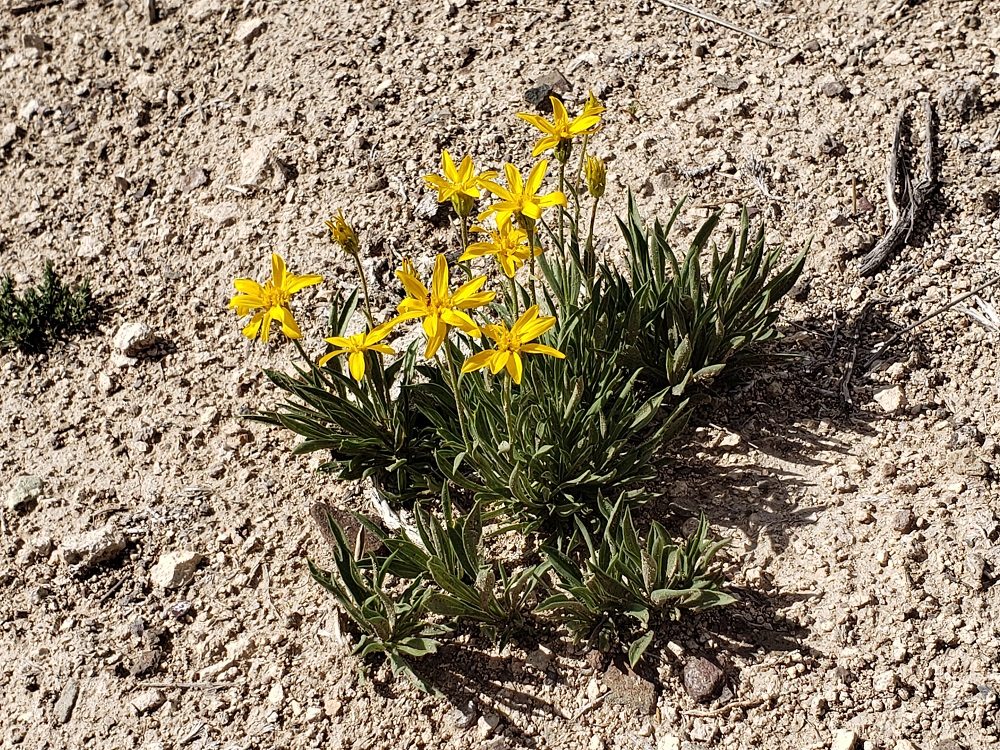
The bees are just one of the beneficiaries of our organic wild agriculture. We’ve certified organic our entire 46,000 acres of grazing country, and it is a large enough piece of real estate that all the parts from bears to bugs survive as they have since the last ice age. On other ranges like ours here in Idaho that are not organic (we have the only one), the government managers wield spray equipment (even on helicopters), using glyphosate (of Roundup Ready GMO fame) for weed control. Studies have recently been published that suggests glyphosate may be cause declines in the non-native honeybee (imported from Europe with the first colonists).
I could not find similar studies on our ground-nesting native bees, which in aggregate are far more important pollinators than the imported honeybee. “I think that it’s important to remember that honeybees are a managed livestock in the U.S.,” says Mark Nagel, resident beekeeper at the Idaho Botanical Garden. “Saying that you are saving the bees by helping the honeybee is like saying you are saving birds by helping chickens.”
Caryl and I are often taken aback when visiting intensive ag communities in southern Idaho or the Midwest; there’s not much need to clean windshields on a summer night. There are not many insects. In contrast, we have to wash our windshields every few hours of driving. The insects are collateral damage from an agriculture that depends on tillage, monocultures, and chemicals. Even grass-fed beef production is culpable: The Range and Pasture Steward magazine is handily published by Dow Chemical, and describes how you can eliminate all those pesky weeds.
Not only is the fox in charge of the chickens. They are outright killing them.
Our chemical obsession is summarily killing us by killing our insect and microbe partners. We are changing the signature of planetary biodiversity, one Roundup application at a time. It is subtle, but significant. Especially when you are thrust into evaluating the contrast between fully functioning ecosystems, like on our Hat Creek range, and non-functioning as in the corn and bean belt.
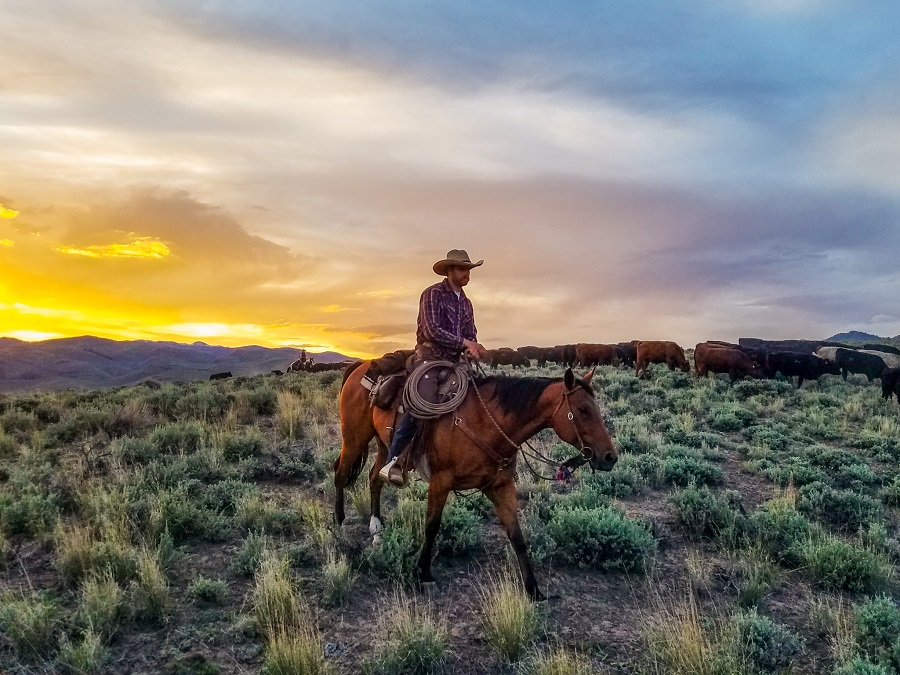
What to do? It starts and ends by the decisions we make for our table. Support life by eating regeneratively. There aren’t many of us practitioners, but they are gaining in numbers. Their produce may not be in supermarket and big box, but these nouveau agriculturists have passion and zeal for mimicking that which nature placed here before us. Sometimes we have to learn the mimic, and it takes a while, but in the process, regeneration of key processes is taking place.
Regeneration. It’s the opposite of degeneration. Industrial ag has largely degenerated nature. The “progress” of plow in this, our green revolution has by definition “turned over” the natural life and living for everything above and below the soil surface.
And look for organic. It’s the only close to guarantee we have that proves no chemical use. Despite the slams on organic branding, it is all we have. Because the truth of the matter is that anything not organic is far from it. Because given the freedom to use chemicals, it is fairly ubiquitous: people will use them.
Beware of cheesy “beyond organic” claims. Most of them use Roundup. Or chemical pour-ons to kill parasites on their cattle. They say hormone and antibiotic free, but that is the tip of the iceberg on all the other things they use.
And nearly all of them affect bees. Pollinators.
Rachel Carson spoke of a silent spring. What about a flowerless or colorless one?
Sometimes, I am breathless with the beauty we get to walk in. Just today, I watched wildflowers on mountain hillsides caressed by silent breezes framed by a horizon of snow streaked peaks under mounting thunderheads. I jumped an elk from her graze earlier this week. She was in spring color of rich red umber, and her hair fairly glistened in the light of the setting sun. We share life and livelihood with pronghorn and peregrine, with elk and owl, with bee and bobcat. It is easy to mimic nature here, because it is all around us.
All we have to do is watch and listen.
Thanks for helping us do that.
Happy Trails.
Glenn, Caryl, Girls and Cowhands.
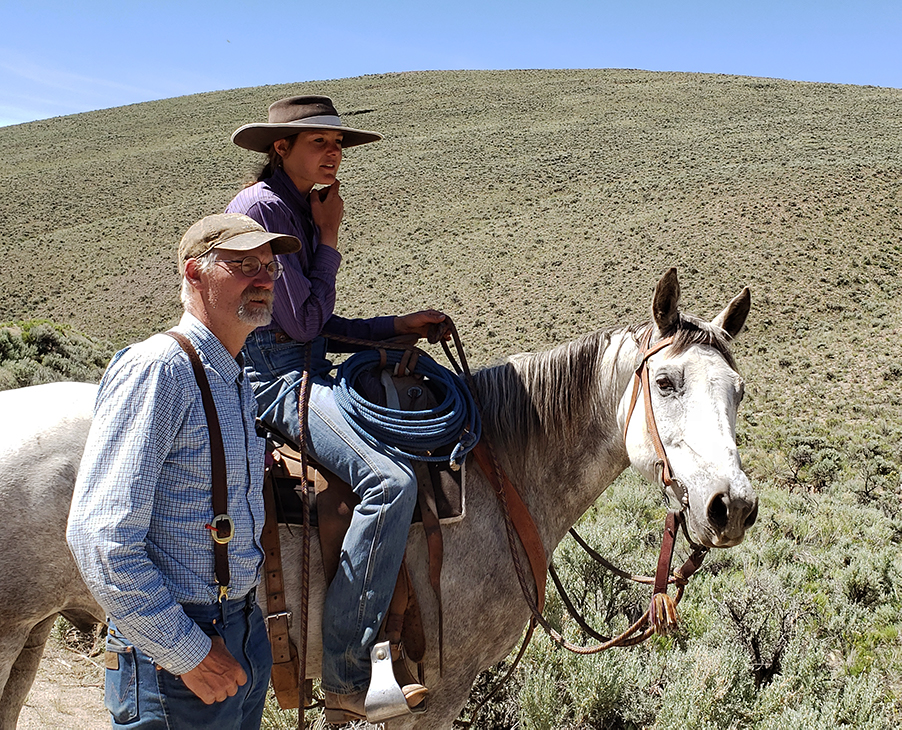



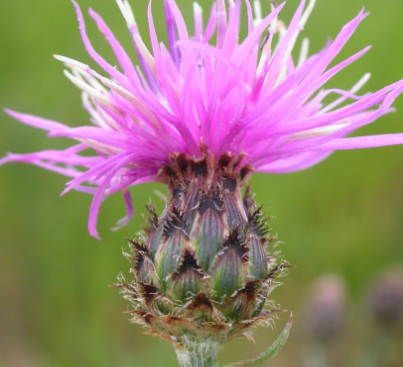
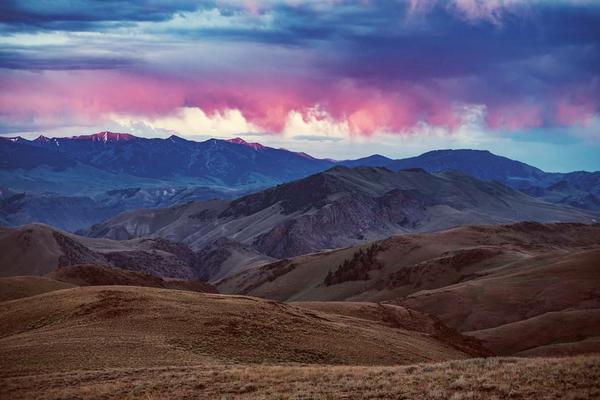
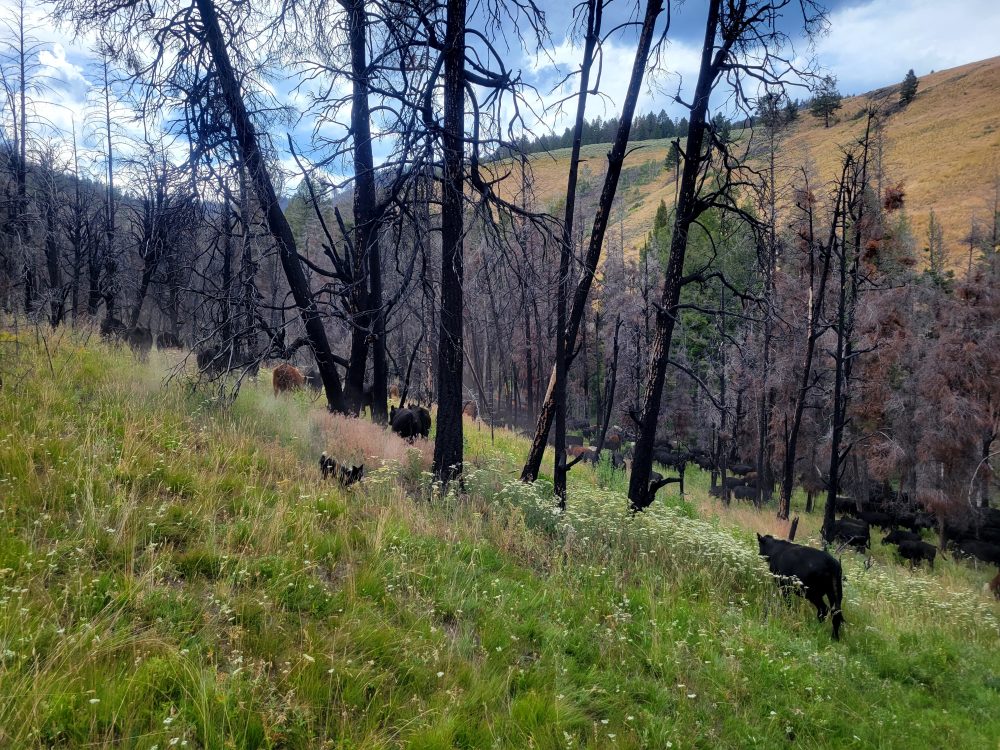

Judy Summerville
I sooo agree with you. I hope our number is growing.
Leo Younger
https://www.realorganicproject.org/rop-certified-farms-west/ Here, when you scroll down to Idaho, you’ll find our favorite, Alderspring. Just click on it and read. Next, please consider donating. The Real Organic Project is a private add-on certification to USDA certified organic because the USDA is, like most if not all federal agencies, captured by very large corporate interests and their corrupting friends. In other words, The Real Organic Project exists because the real organic ranchers, farmers, and consumers know that USDA certified organic is inadequate, and the USDA is not getting better at this time.
Leo Younger
https://www.cornucopia.org/scorecard/organic-beef-scorecard/alderspring-ranch/ Cornucopia’s beef scorecard rates Alderspring as a perfect 1100.
Jan
Thank you âï¸. Someone needs to set the precedent, show
It can be done…
Natalie
I wholeheartedly agree, and am very glad to see your efforts and those of other organic farmers..
But had one reaction to Mark Nagel’s comments on saving the bees, as it seems to me that some of the things that we do to help honeybees would also benefit native bees.
Leo Younger
Using a search phrase, such as native bees versus honeybees, got many responses, and the majority indicate that native bees are adversely affected by honeybees presence, for reasons including, but not limited to, competition for forage, diseases, and parasites. Domesticated honeybees are primarily bred for honey production. A North American health foods distributor which tests all their foods for glyphosate has complained for many years that finding any honey free of that chemical is difficult to impossible from any North American source. Recently, even their remote Canadian supplier failed that test. Drift happens. Regarding pollination, honeybees stop flying at ~ 55.4 F, but many native bees can fly in cooler weather. Native bees are better for pasture and rangeland, at least, and probably for most pollinator dependent crops, IMO. Native bees manage themselves at no cost.